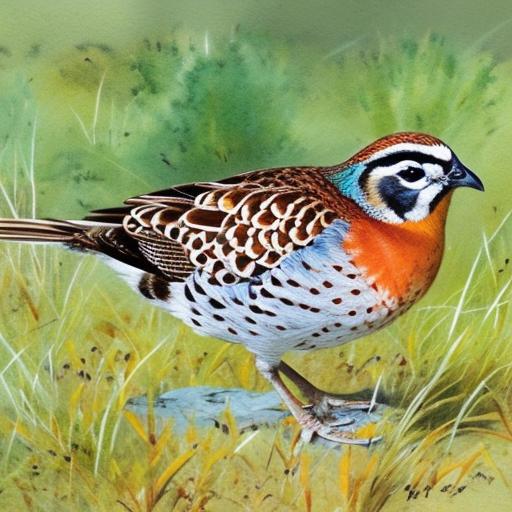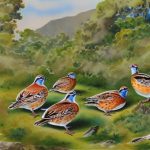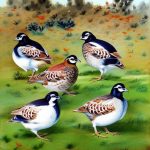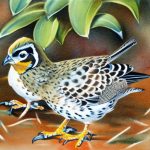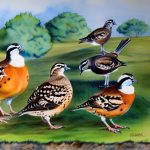Quails are small, ground-dwelling birds that are popular for their delicious eggs and meat. They are also known for their ability to adapt to various environments, making them an ideal choice for backyard farming. There are many different quail breeds, each with its own unique characteristics and traits. Whether you are interested in raising quails for eggs, meat, or simply as pets, there is a breed that will suit your needs. In this article, we will explore the various common, rare, and exotic quail breeds, as well as provide tips for choosing the right breed for your specific needs and how to care for them.
Key Takeaways
- There are many different quail breeds, each with their own unique characteristics and traits.
- Some common quail breeds include the Coturnix, Bobwhite, and California quail.
- Rare and exotic quail breeds, such as the Japanese quail and Gambel’s quail, offer unique and interesting options for breeders.
- When choosing a quail breed, consider factors such as egg production, meat quality, and temperament.
- Proper care and breeding techniques are essential for the health and well-being of quail, including providing a suitable habitat and diet.
Common Quail Breeds
1. Coturnix Quail: Also known as Japanese quail, Coturnix quails are the most popular breed for backyard farming. They are known for their high egg production, with some hens laying up to 300 eggs per year. Coturnix quails come in a variety of colors, including brown, white, and tuxedo. They are also relatively easy to care for and can adapt well to different climates.
2. Bobwhite Quail: Bobwhite quails are native to North America and are known for their distinctive call that sounds like “bob-white.” They are popular for their meat and are often hunted in the wild. Bobwhite quails are also raised in captivity for meat production and can be found in various color variations such as white, silver, and brown. They are relatively easy to care for and can thrive in a variety of environments.
Rare and Exotic Quail Breeds
1. Blue Scale Quail: The Blue Scale quail is a rare breed native to the southwestern United States and Mexico. They are known for their striking blue and gray plumage, making them a popular choice for aviculture enthusiasts. Blue Scale quails are relatively small in size and are known for their shy and secretive nature. They require a spacious and well-vegetated enclosure to thrive.
2. Gambel’s Quail: Gambel’s quails are native to the desert regions of the southwestern United States and Mexico. They are known for their unique topknot plume on their heads and striking black and white facial markings. Gambel’s quails are popular for their beautiful appearance and are often kept as ornamental birds. They require a dry and arid environment with plenty of hiding spots and vegetation.
Choosing the Right Quail Breed for Your Needs
When choosing a quail breed, it is important to consider your specific needs and goals for raising quails. If you are primarily interested in egg production, Coturnix quails are an excellent choice due to their high egg-laying capacity. If you are looking for a breed that is easy to care for and can adapt to various environments, both Coturnix and Bobwhite quails are good options. For those interested in rare and exotic breeds, Blue Scale and Gambel’s quails offer unique and beautiful characteristics that make them stand out.
It is also important to consider the climate and environment in which you will be raising your quails. Some breeds may be better suited for colder climates, while others thrive in warmer, arid environments. Additionally, consider the space and resources you have available for raising quails. Some breeds may require more space or specific habitat requirements to thrive.
Quail Breeding and Care Tips
Once you have chosen the right quail breed for your needs, it is important to understand how to properly care for and breed them. Quails require a well-ventilated and spacious enclosure with access to fresh water and a balanced diet. They can be fed a commercial game bird feed or a mixture of grains, seeds, and greens. It is important to provide them with a secure shelter to protect them from predators and the elements.
When breeding quails, it is important to provide them with the right conditions for nesting and egg-laying. Ensure that they have access to nesting boxes filled with soft bedding material such as straw or wood shavings. Collect eggs regularly to prevent them from being damaged or eaten by the quails. Incubate the eggs at the right temperature and humidity levels to ensure successful hatching.
Resources for Quail Breed PDFs
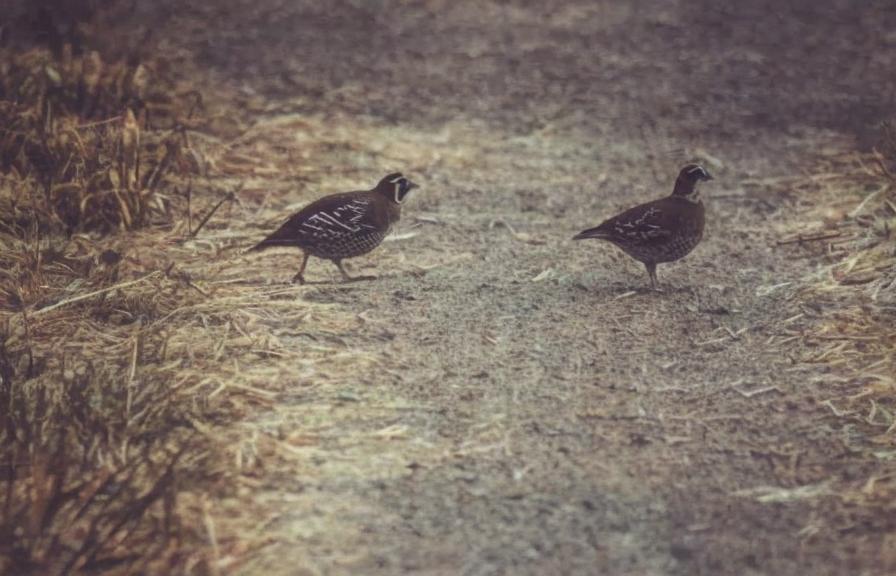
For those interested in learning more about specific quail breeds, there are many resources available online that provide detailed information about each breed. Many breeders and organizations offer PDFs and guides that cover topics such as breed characteristics, care requirements, breeding tips, and more. These resources can be valuable tools for anyone looking to raise quails, whether for eggs, meat, or as ornamental birds.
Some reputable sources for quail breed PDFs include agricultural extension websites, university publications, and specialty quail breeding organizations. These resources can provide valuable insights into the specific needs of each breed and help you make informed decisions about which breed is right for you.
Conclusion and Further Reading
In conclusion, there are many different quail breeds to choose from, each with its own unique characteristics and traits. Whether you are interested in common breeds like Coturnix or Bobwhite quails, or rare and exotic breeds like Blue Scale or Gambel’s quails, there is a breed that will suit your specific needs and goals. By considering factors such as egg production, climate suitability, and space requirements, you can choose the right breed for your quail farming endeavors.
For further reading on quail breeds and care, there are many books, websites, and forums dedicated to quail farming that can provide valuable information and support. Additionally, reaching out to local breeders and joining online communities can provide opportunities to connect with experienced quail enthusiasts who can offer guidance and advice. With the right knowledge and resources, you can successfully raise healthy and thriving quails for eggs, meat, or simply as beloved pets.
If you’re interested in learning more about quail breeds, you might also want to check out this informative article on snaplock chicken coops. It provides valuable insights into creating a safe and comfortable environment for your poultry.
FAQs
What are the different quail breeds?
There are several different quail breeds, including the Coturnix quail (also known as Japanese quail), Bobwhite quail, Gambel’s quail, California quail, and Mountain quail.
What are the characteristics of Coturnix quail?
Coturnix quail are known for their small size, rapid growth, and high egg production. They come in various color variations, including tuxedo, golden, and white.
What are the characteristics of Bobwhite quail?
Bobwhite quail are native to North America and are known for their distinctive call and attractive plumage. They are popular for hunting and are also raised for meat and eggs.
What are the characteristics of Gambel’s quail?
Gambel’s quail are found in the southwestern United States and are known for their striking plumage and distinctive topknot. They are popular for both hunting and ornamental purposes.
What are the characteristics of California quail?
California quail are known for their elegant appearance, with a curved plume on their head and a black bib on their chest. They are popular for both hunting and as ornamental birds.
What are the characteristics of Mountain quail?
Mountain quail are found in the western United States and are known for their unique appearance, with a striking head plume and chestnut-colored flanks. They are popular for hunting and as ornamental birds.
Meet Walter, the feathered-friend fanatic of Florida! Nestled in the sunshine state, Walter struts through life with his feathered companions, clucking his way to happiness. With a coop that’s fancier than a five-star hotel, he’s the Don Juan of the chicken world. When he’s not teaching his hens to do the cha-cha, you’ll find him in a heated debate with his prized rooster, Sir Clucks-a-Lot. Walter’s poultry passion is no yolk; he’s the sunny-side-up guy you never knew you needed in your flock of friends!

